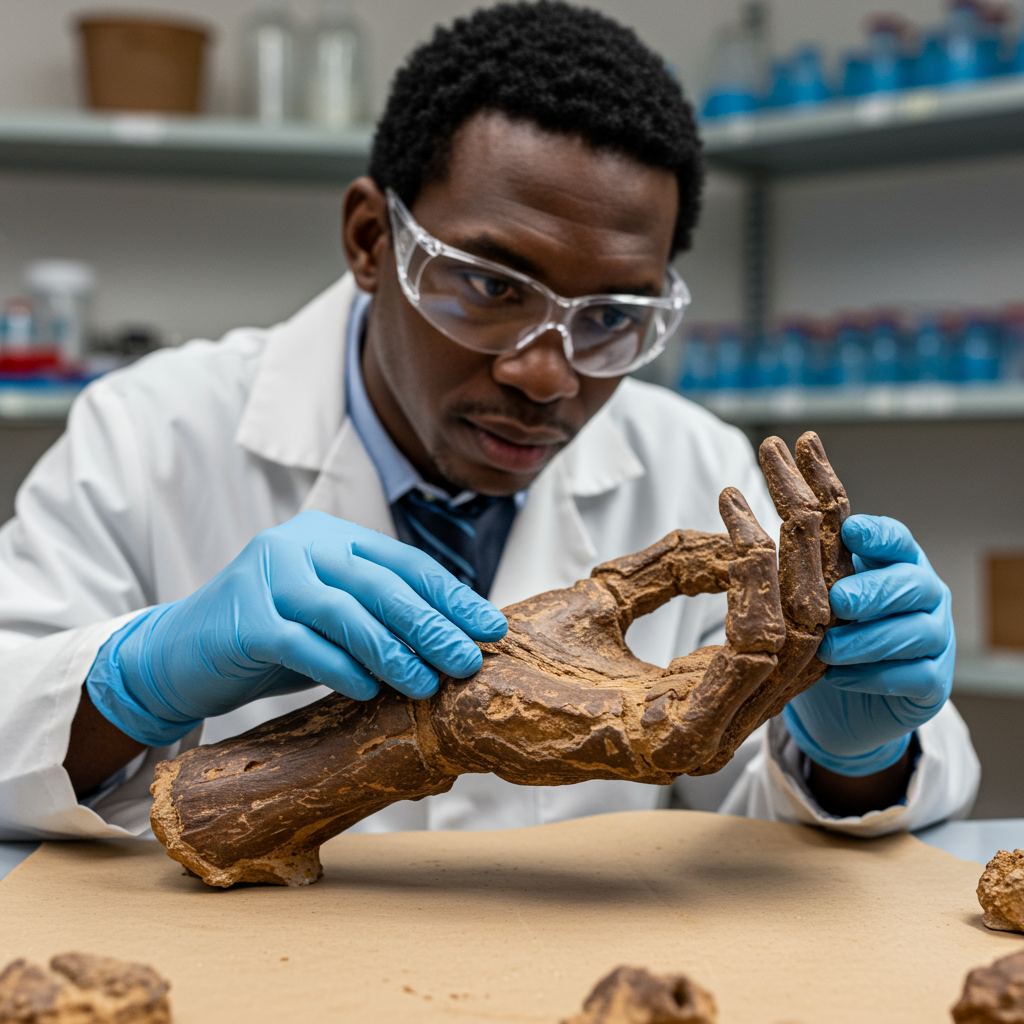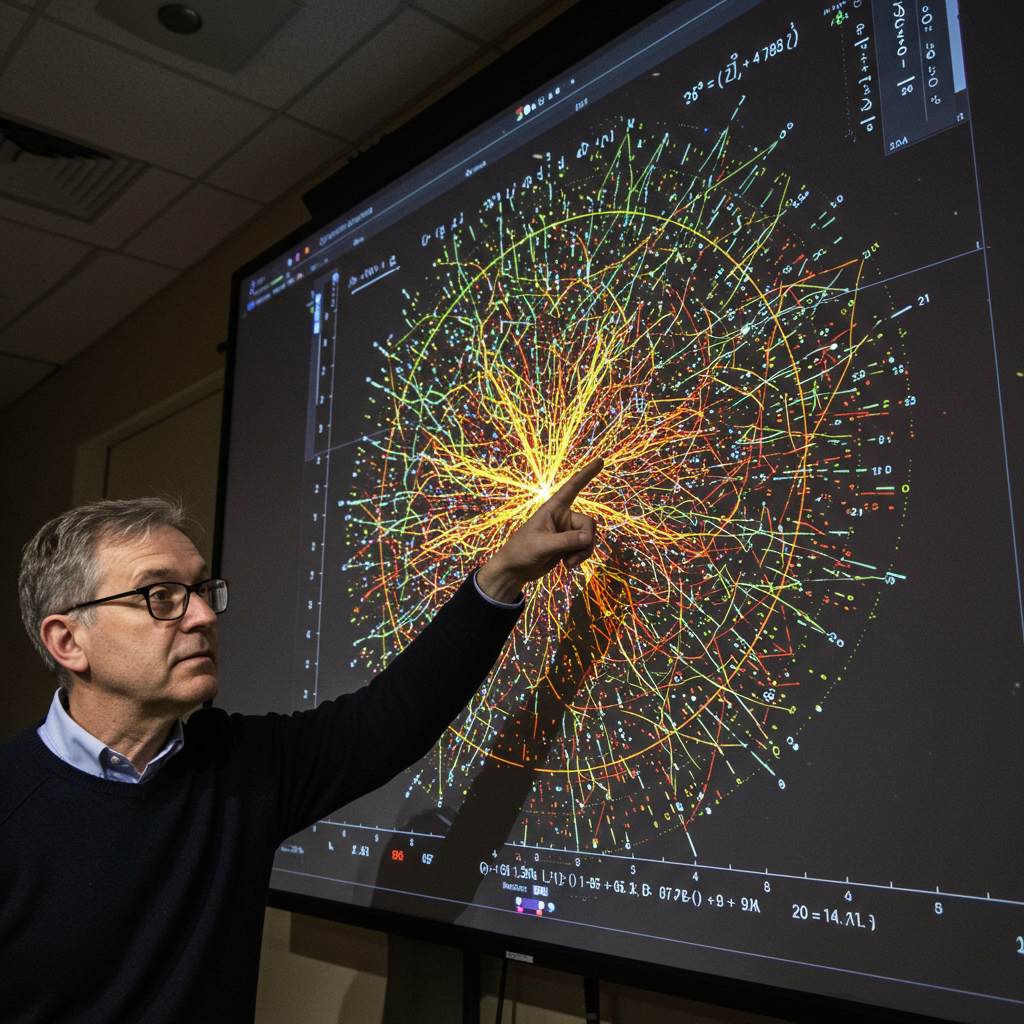A groundbreaking discovery in Kenya is challenging decades of assumptions about early human evolution. Newly unearthed fossils, dating back 1.52 million years, are fundamentally altering our understanding of Paranthropus boisei, an ancient hominin previously dubbed “Nutcracker Man.” Far from being an oafish plant-eater, this new evidence reveals a creature with surprising manual dexterity and sophisticated bipedal locomotion, forcing paleoanthropologists to rewrite chapters of human ancestry. This pivotal find not only recharacterizes a long-misunderstood species but also reshapes our perspective on the complex, non-linear journey of human evolution itself.
The Unveiling of KNM-ER 101000: A Landmark Discovery
Between 2019 and 2021, a team led by paleoanthropologist Carrie Mongle of Stony Brook University made an extraordinary find in Kenya’s Turkana Basin. They unearthed fossil remains, cataloged as KNM-ER 101000, that included crucial hand and foot components, alongside parts of a skull and teeth. This collection was confidently identified as belonging to a single Paranthropus boisei individual, a feat that resolves long-standing debates within the scientific community. Finding associated hand, foot, and skull elements from the same hominin is exceptionally rare and profoundly significant.
This discovery reignites a historical debate within the renowned Leakey family. Mary Leakey, in 1959, found a P. boisei skull near stone tools, initially prompting her husband Louis to consider it a toolmaker. However, the later discovery of Homo habilis (“Handy Man”) shifted this theory, with Homo becoming the favored candidate for early tool production due to its larger brain. Richard Leakey, Louise Leakey’s father, further cemented this view, suggesting P. boisei‘s massive jaw indicated a purely plant-based diet with little need for cutting tools. The missing piece—an unambiguously linked hand—has now been found, thanks to Louise Leakey and her team, adding a new chapter to their family’s enduring legacy.
Redefining “Nutcracker Man”: Beyond a Powerful Jaw
For decades, Paranthropus boisei was primarily known for its massive jaw and powerful chewing muscles, leading to its “Nutcracker Man” moniker. This formidable dental apparatus suggested a diet of tough, coarse grasses and reeds. Much of its skeletal anatomy, however, remained a mystery, leading to assumptions of a relatively unsophisticated, specialized plant-eater.
The new fossils shatter this simplistic image. They reveal Paranthropus boisei as a more versatile hominin than previously imagined. Its robust physical characteristics were not solely for grinding plants but likely supported a broader range of behaviors and adaptations, challenging the long-held perception of an “oafish plant-eater.”
A Hand of Surprising Dexterity and Power
The reconstructed hand of Paranthropus boisei presents a remarkable combination of strength and surprising dexterity. Its features are quite unexpected for a hominin often considered less evolved than Homo. The hand boasts a relatively long thumb, a characteristic shared with modern humans, indicative of capabilities for precise movements like pinching and grasping small objects.
However, its bones are robust, akin to those of gorillas, with exceptionally strong joints at the base of the thumb and in the wrist. This suggests a powerful grip, capable of generating significant pressure. Carrie Mongle noted the unexpected similarities to human hands in terms of proportions—a long thumb, short fingers, and a flexible little finger—all traits that predict good grip and precise manipulation. While P. boisei‘s hand was not as refined as later Homo species for intricate tool-making, its structure strongly implies a fundamental capacity for tool use. Experts suggest its grip would have enabled “more functional than technological” movements, such as using rocks to open large seeds or strip bark. Muscular markings on the hand further point to intense use for both locomotion and obtaining food, implying a versatility previously unrecognized.
Footprints of an Upright Walker
Beyond the impressive hands, the fossilized feet of KNM-ER 101000 provide unequivocal evidence of confident bipedal walking. Key anatomical features, such as a solid big toe angled for pushing off the ground and a structural twist in the mid-foot, strongly support a powerful, arched step. These traits are hallmarks of a creature well-adapted to upright walking on the ground.
This finding suggests Paranthropus boisei was comfortable traversing savannas, browsing for food, or moving along lake edges, rather than being primarily a forest dweller. Although it might have retained some climbing ability, its foot structure points to a primary mode of locomotion on two feet, reinforcing its adaptability to diverse environments.
Rewriting the Story of Hominin Evolution
The discovery of the P. boisei hand and foot has profound implications for our understanding of human evolution. It confirms that Paranthropus boisei and early Homo coexisted over a million years ago, a fact supported by earlier footprint discoveries. Crucially, this challenges the long-held belief that tool use or significant manual dexterity was a unique, distinguishing characteristic of the Homo lineage. Adrián Pablos notes that the finding makes P. boisei seem “more human,” significantly altering previous perspectives.
The hand proportions also offer critical clues about the last common ancestor of Homo and Paranthropus. They suggest that early hominins already possessed large thumbs and robust grips before their evolutionary split. The Homo lineage then further refined these traits for sophisticated tool-making, but the foundational capabilities were likely already present. This underscores a central theme in paleoanthropology: human evolution was not a simple, linear progression. Instead, it was a complex interplay of shared and variable anatomical and behavioral adjustments that existed simultaneously across different hominin species. This collaborative process, shaped by numerous lineages, ultimately led to what we recognize as Homo sapiens.
Why This Discovery Matters Today
These ancient fossils hold significant practical implications, deepening our understanding of what makes Homo sapiens unique. They demonstrate that dexterity and tool usage evolved gradually through experimentation across various hominin species, rather than appearing suddenly and exclusively in our direct ancestors. This discovery offers a unique opportunity to study the coevolution of anatomy and behavior, illustrating how a species could develop efficient ground-walking and manipulative power without yet perfecting advanced technology.
The insights from KNM-ER 101000 remind us that the human story is one of adaptation, innovation, and interconnectedness across species. It emphasizes the importance of continuing fossil discoveries to fill gaps in our evolutionary tree and constantly refine our narrative of how we came to be.
Frequently Asked Questions
What is Paranthropus boisei and why is this fossil discovery significant?
Paranthropus boisei, often called “Nutcracker Man,” was an early hominin that lived about 1.52 million years ago in eastern Africa, known primarily for its massive jaw. The recent discovery of a nearly complete hand and foot from a single P. boisei individual, KNM-ER 101000, is highly significant because it reveals that this species possessed surprising manual dexterity, capable of tool use, and was a confident bipedal walker. This redefines P. boisei from a simple plant-eater to a more versatile hominin and challenges the long-held belief that only the Homo lineage had manual dexterity and used tools.
Where were the Paranthropus boisei hand and foot fossils discovered, and who led the research?
The Paranthropus boisei hand and foot fossils, along with associated skull and teeth, were discovered in the Turkana Basin in Kenya between 2019 and 2021. The research team responsible for this groundbreaking find was led by paleoanthropologist Carrie Mongle of Stony Brook University. The discovery also involved contributions from National Geographic Explorer-at-Large Louise Leakey and her team, continuing the Leakey family’s long legacy of uncovering pivotal evidence in human evolution.
How does the Paranthropus boisei fossil change our understanding of early hominin tool use and human evolution?
The P. boisei fossil significantly changes our understanding by demonstrating that dexterity and the capability for tool use were not exclusive to the Homo lineage. Its hand anatomy, featuring a long thumb and robust grip, suggests it could perform functional tasks like using rocks to process food, though perhaps not as finely as later Homo species. This challenges the notion of Homo having a monopoly on toolmaking and indicates that early hominins shared a common ancestor with robust grips. It reinforces that human evolution was a complex, non-linear process involving various hominin species developing similar traits simultaneously.
Conclusion
The discovery of KNM-ER 101000 fundamentally redefines Paranthropus boisei, transforming its image from a specialized “Nutcracker Man” into a versatile hominin with remarkable dexterity and robust bipedal capabilities. This million-year-old fossil is not merely an anatomical curiosity; it is a critical piece of the puzzle that compels us to reconsider the timeline and distribution of key evolutionary traits like tool use and upright walking. By revealing P. boisei‘s sophisticated hands and feet, this discovery underscores the incredible complexity and diversity of our ancient ancestors, reminding us that the path to modern humanity was a rich tapestry woven by many distinct, yet interconnected, lineages. The ongoing work in the Turkana Basin continues to unlock secrets, promising even more revelations about the origins of what makes us human.




